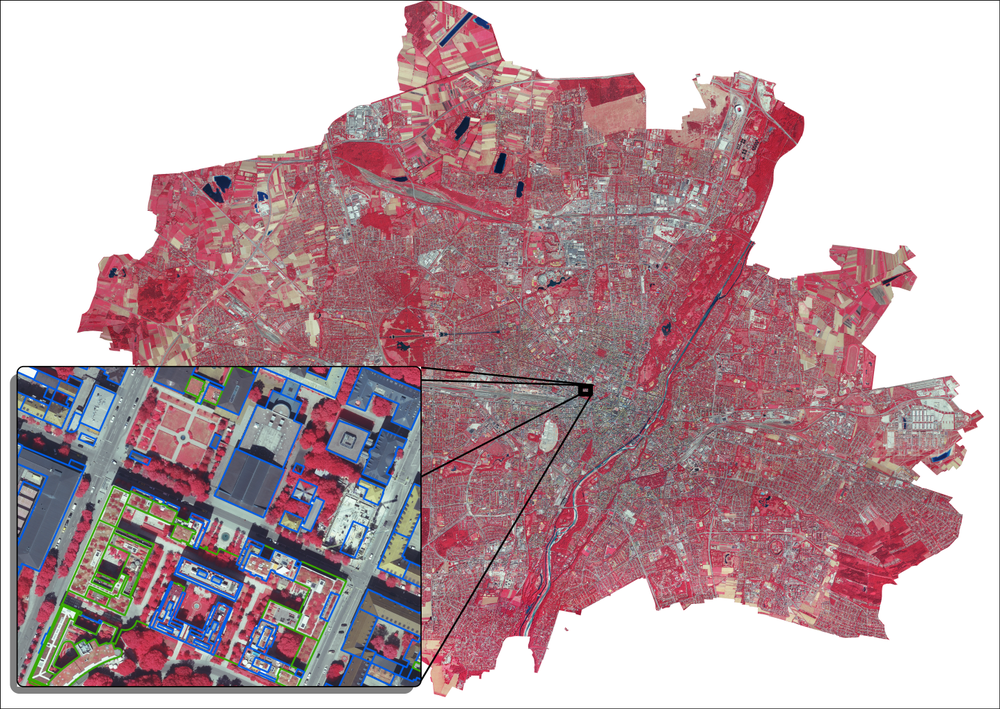It’s turning green and greener… EOC at Bellevue Palace Park
Green roofs make cities more livable—for animals and people. Ecological niches come into being on rooftops where they filter the air, retain water, and exert a positive effect on the climate. How many green roofs are there in German cities now? What is their distribution and where else can existing roofs be landscaped? EOC scientists considered these questions and found answers that were presented during the “2016 Week of the Environment” in the park of Bellevue palace in Berlin.

Deutsche Bundesstiftung Umwelt DBU (CC BY-NC-SA 2.0)
Together with the Deutscher Dachgärtner Verband (DDV), an association of roof gardeners, and various partner cities EOC has developed a remote sensing approach to quickly and efficiently answer such questions. The methodology also convinced the jury selecting presentations for the exhibit “2016 Week of the Environment” in the park of Bellevue palace. Against the impressive backdrop of the official residence of German President Joachim Gauck, activities relating to the project “Inventorizing Roof Greening and Analysing its Potential” could be introduced on June 7 and 8. Some 200 exhibitors from Germany and Switzerland provided an impression of the variety of new environmentally friendly technologies, products and services. Already last year the Roof Greening Project, which was sponsored by the German Federal Environmental Foundation (DBU), received a “Green Roof Leadership Award” in the category “Green Roof Pioneers” during the 4th International Green Roof Congress held in Istanbul.
Because of its numerous effects on urban ecology, greening roofs is a way to reduce the effects of climate change (heat waves, floods) on city populations. For that reason many local governments regard the deliberate development of green roof infrastructure as an important component of sustainable city planning. However, only a few cities have detailed information on the present number of green roofs and the number of roofs that can potentially be greened. This knowledge deficit can now be overcome with a new method developed to obtain a green roof inventory and analyse the potential for urban roof greening based on remote sensing technology. It makes use of high resolution false-colour infrared images—images collected by satellites and aircraft that depict green areas in bright red—combined with base data on buildings (building contours, 3D city models). The values determined in this way for green roof inventory and analysing their potential can be used at the municipal level in urban climate models, drainage planning and biodiversity concepts. The procedure was tested in five cities and has high potential for practical municipal implementation.

